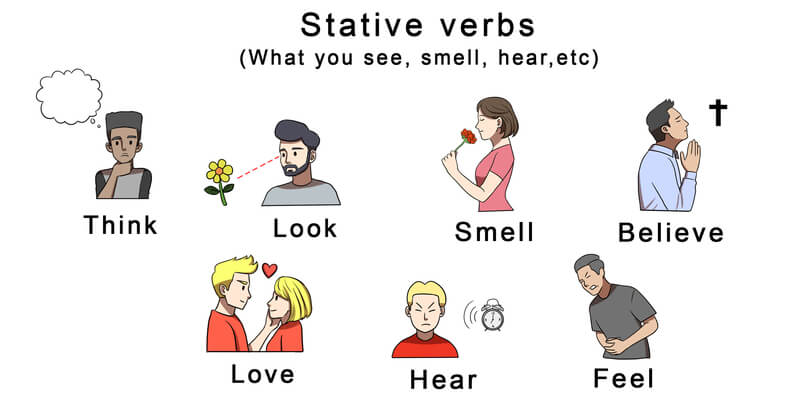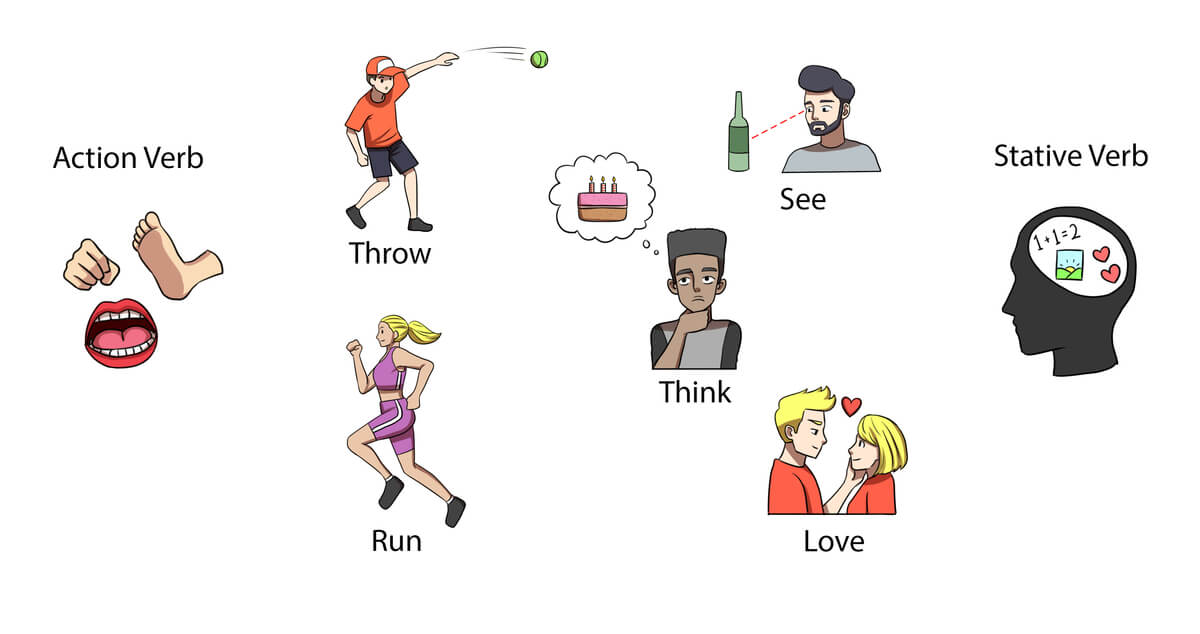Stative Verbs
- Stative verbs describe states or conditions that are static or unchanging. They do not show a physical action.
- Action verbs express an action, event, or change.
- Stative verbs are often used in the simple present tense and do not usually have continuous (-ing) forms.
Let's talk about a type of verbs called stative verbs. Understanding what they are and how they are different from action verbs is an important part of learning English.
What are Stative Verbs?
Stative verbs describe states, conditions, thoughts, feelings, and sensations. They are about what someone or something is. Normally, they do not involve any physical action.
Common stative verbs are: like, love, dislike, hate, see, feel, think, taste, hear, have, believe, smell.

Examples:
-
I love pizza.
"Love" is the stative verb (feeling).
-
He believes in ghosts.
"Believe" is the stative verb (thinking).
What are Action Verbs?
Action verbs are different from stative verbs. They express an action, event, or change.
Common action verbs are: eat, drink, take, kick, read, find, run, use, walk, get, laugh.

Examples:
-
She eats a hamburger.
"Eat" is an action verb.
-
I read a book.
"Read" is an action verb.
Stative verbs shouldn't be used in continuous tenses
Stative verbs do not usually have continuous (-ing) forms. This is because they represents a state or condition.
For example, we say "I know English", NOT "I am knowing English".
和AI英語導師一起練習這個主題
AI英語導師會教你文法,並以對話的形式和你一起練習。 另外,還有 100 多個有關該主題的練習題來鞏固您的理解。
在您的手機或平板電腦上免費試用 ALULA








你對這節課有任何問題嗎?請在下面的評論區提問。